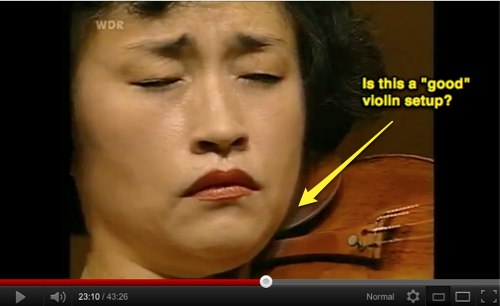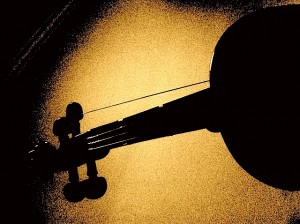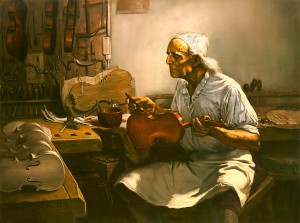First of all, enjoy this video of Kyung-Wha-Chung, one of the great violin artists of our time. It’s a fabulous, world class and heartfelt performance by any standard.
Viewed from the perspective of a violin teacher, I feel obligated to point out that from a setup standpoint, the violin and the violinist may not be set up to best advantage, though I would be the last to suggest that Ms. Chung change anything about her playing.
On the other hand, when I see a fit or setup problem in a young student, I would always try to make things more comfortable and practical.
In this case notice that the player’s jaw bone isn’t aligned in the “groove” of the chin rest. Often in a case such as this, a chin rest that floats over the tailpiece of the violin might be more comfortable for the player. It won’t work for everyone as factors such as length of neck and arms also come into play. All of this can (and should) be analyzed by someone experienced in optimizing the violin/chin rest/shoulder rest combination.
So why does this work so well for Ms. Chung? Simply because her approach to the violin is dynamic, not rigid. The instrument isn’t locked into place. Rather, it floats, moves and adjusts along with the needs of the musical passage. The weight of the violin is balanced between multiple points, keeping the head and neck free of excess tension. It’s a great lesson for every player.
Why make things difficult when they can be simple?
For our younger Invincible Violinists and their families, know this: Never accept your instrument setup at face value. The size, lift and type of chin rest, the presence (or absence of) a shoulder rest, the way your instrument relates to your body and its movements, all of this, shouldn’t be left to chance.
—
If you find this information helpful, please share or tweet this page or post, using the buttons below. Thanks!



